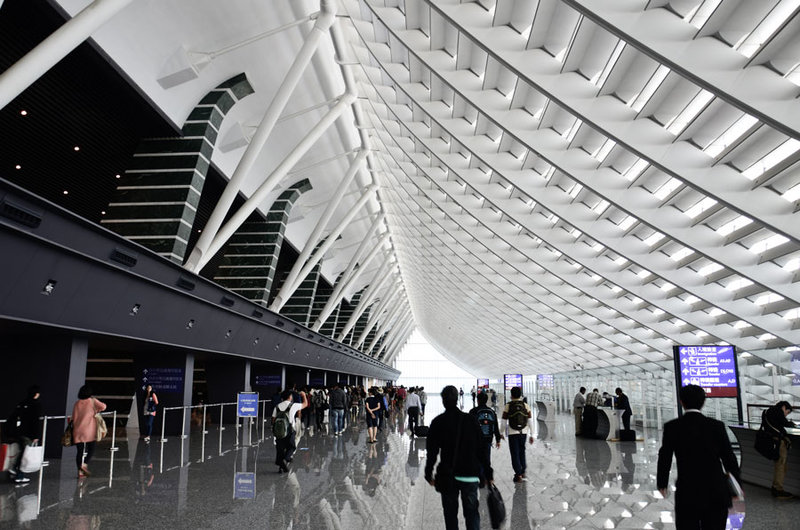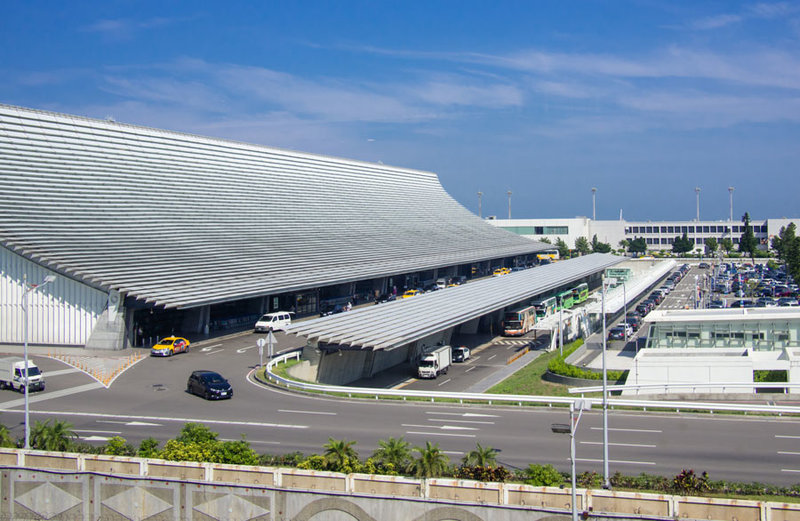T
he long-standing political and diplomatic tensions between China and Taiwan date back to 1949, when governance of the island state was taken over by China. Today, the two states maintain a delicate and fraught relationship due to an ongoing dispute over Taiwan’s status as a country.
While China staunchly insists that there is only “one China” comprised of both the island state and the mainland, some advocates insist that democratically led Taiwan is its own, independent territory and as such, should be recognised as a stand-alone country.
Although bilateral trade between the two has blossomed – in 2014, it reached $198.31bn, according to the Council on Foreign Relations – the ongoing disagreement has had repercussions on many industries, including aviation, which has been held back by airspace restrictions and a flat out ban on any passenger flights, which only ended in 2006. While it’s true the number of direct flights between China and Taiwan has grown, from 270 in 2009 to just fewer than 900 per week at present, political tensions and disagreements over Taiwan’s status have stymied real growth.
But times are certainly changing. As a country that once relied on Chinese citizens to make up its bulk of arrivals by air, Taiwan has recently been blessed with a growing interest from neighbouring territories, as well as the wider international community, so much so that international arrivals in Taiwan reached a record high of nearly 10.7 million passengers in 2016, according to its tourism bureau.
This is partly due to the recent economic growth of Southeast Asian countries, as well as the growth of the global aviation market in general. An influx of travellers that belong to a new affluent Middle Eastern generation hungry for travel is also playing a big part.
Now, Taiwan Taoyuan International Airport (TTIA) has started work on a third terminal to handle the growing flow of passengers, promising to open “a new compact, vibrant aero city” in the near future.
Image courtesy: Something / Example.com
Geopolitical tensions keep airlines at bay
For over half a century, air transportation between mainland China and Taiwan was banned, during which time both passenger and cargo aircraft flying between them had to bypass Hong Kong or Macao airports.
In 2002, the chairman of the Association of Taiwan Businessmen in China suggested opening up cross-strait connectivity to a limited number of charter flights during the Spring Festival season, also known as Chinese New Year, to allow visitors to travel between the two countries.
It took four years before the agreement was achieved, with 72 charter flights supported by six airlines on each side of the strait being introduced for the first time in 2006. Over the following years, charter flights were extended for journeys made during the Dragon Boat and Mid-Autumn Festivals and Tomb-Sweeping Day, before being “normalised” in 2009, when the north air route between mainland China and Taiwan was opened.

Image courtesy: cesc_assawin / Shutterstock.com
“It [was] the first time for air traffic control officers to exchange directly for 60 years,” wrote the authors of a study analysing the impacts of direct air transportation links between the countries.
Most recently however, the dispute was revived after The Washington Post revealed in March that the Civil Aviation Administration of China sent a letter to 36 carriers, threatening to use new punitive regulation against them, unless they cease referring to Taiwan, Hong Kong and Macau as independent territories on their websites. The move was labelled as “Orwellian nonsense” by the US White House, an accusation that didn’t dissuade China from maintaining that the international community should recognise, and abide by, the “one China” ideology.
A few of the targeted airlines, including Qantas and Delta Airlines, apologised for the “oversight” and promised to correct the error.
Eero Knuutila is Head of Service Development at Helsinki Airport.
Image courtesy: Helsinki Airport

Image courtesy: SandraSWC / Shutterstock.com
The spat comes at a time when many international air carriers are opening up services to Taiwan, thanks to growing potential for tourism and trade. In April, Air France opened a new direct route into Taipei, marking the airline’s return to Taiwan in almost two decades. The flight will depart three times per week, on Mondays, Thursdays and Saturdays.
In February, Air New Zealand also announced it will begin offering up to five direct flights a week between Auckland and TTIA in November.
Air New Zealand chief executive Christopher Luxon told the NZ Herald that the move “is part of deepening that Pacific Rim strategy and those deep connections into Asia”. The company believes that the direct link will help further grow the number of Taiwanese visitors who travel to New Zealand, after approximately 36,000 arrived just last year.
In April, Air France opened a new direct route into Taipei, marking the airline’s return to Taiwan in almost two decades
Taiwan is ready for aviation growth
Taiwan’s main airport is East Asia’s biggest aviation hub, located no further than 175 minutes away from Asia’s five largest airports.
It has been under development since 2009, when the Terminal 1 reconstruction began, adding 13,000ft2 of space and upping its capacity from 12 to 15 million passengers per year.
Now, the latest project focuses on Terminal 3, which strives to become a bona fide aerotropolis after a €1.4bn expansion scheme that will enable the airport to handle a projected 45 million visitors in 2020 and 60 million in 2030. The scheme includes a new terminal building, boarding gates, concourses and a multi-function building, along with transport infrastructure.
The construction of the project is one of Taiwan’s key national policies.
According to Rogers Stirk Harbour + Partners, which won a competition to design the new Terminal 3 building, its architecture “is inspired by Taiwan’s beautiful landscapes, the seas surrounding it, its rhythms of nature and life to create a series of unique interior places”.

Image courtesy: i viewfinder / Shutterstock.com
“Its rational plan arrangement is forecast to deliver minimum connection times of just 40 minutes, the best in the region, with simple way-finding and airside connectivity,” the firm writes on its website. “Our proposal is focused on a passenger’s experience with a deliberate strategy to absorb constant future change, whilst always retaining the integrity of its unique design. The terminal will be designed to meet the highest sustainability criteria; holistic engineering and architecture.”
Construction plans hit a rough patch in April, when Minister of Transportation and Communications Ho Chen Tan announced that the 2020 scheduled deadline would not be met. The delay didn’t come as a complete surprise, however, since it had been first foreshadowed in February by airport officials who warned that such a setback might occur. Indeed, companies expressing interest in the project had also argued in the past that, given the project’s ambitions and size, the original timeline was too short.
Despite the temporary setback, the Terminal 3 project is a grand testament to Taipei opening its gates to the world. Although it may be unable to uphold the country’s political independence, it’s an assertive and confident move that serves to show that (restrictions, diplomatic scuffles and political threats aside) Taiwan is open for business.
The latest project focuses on Terminal 3, which strives to become a bona fide aerotropolis after a €1.4bn expansion scheme